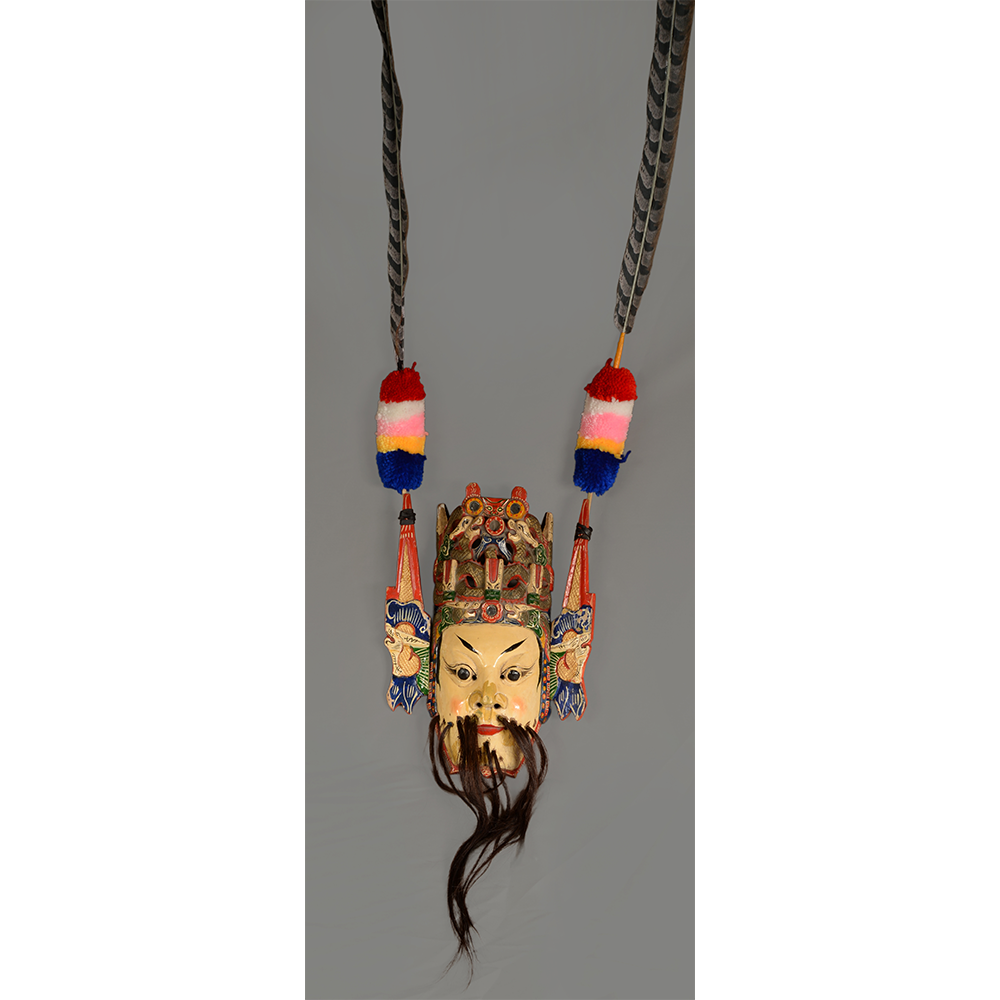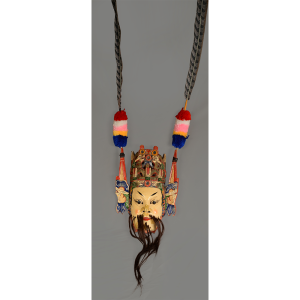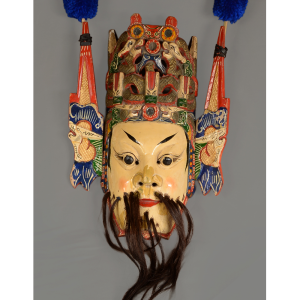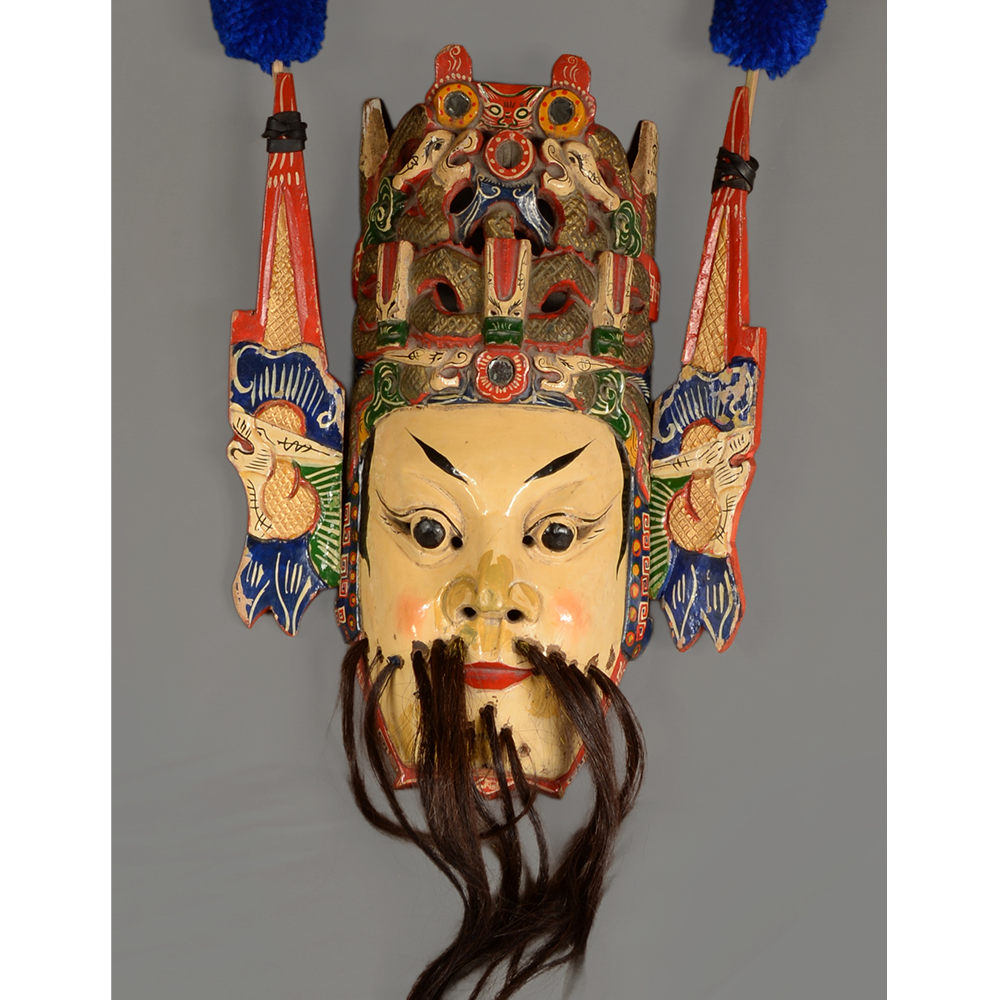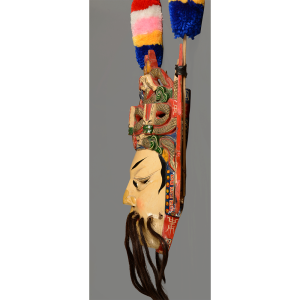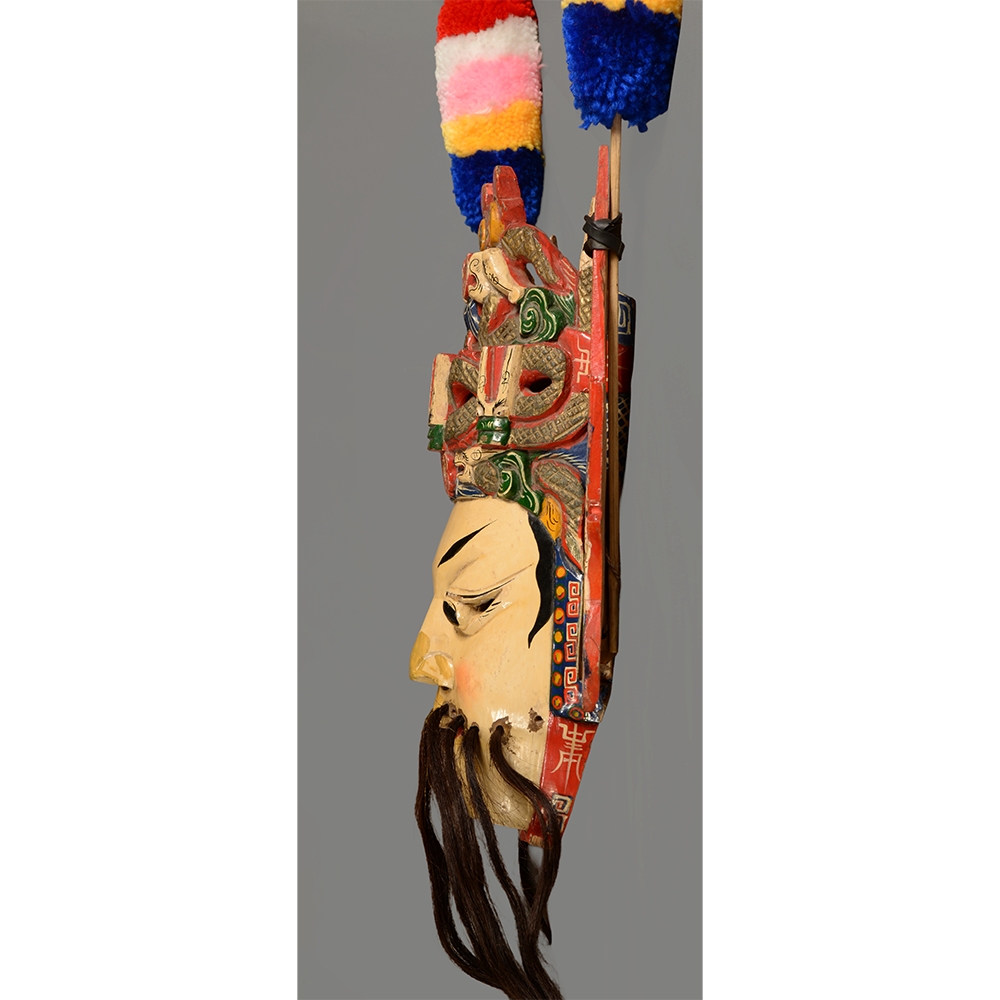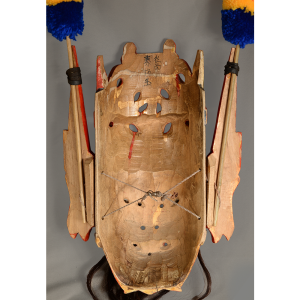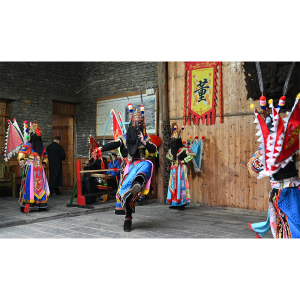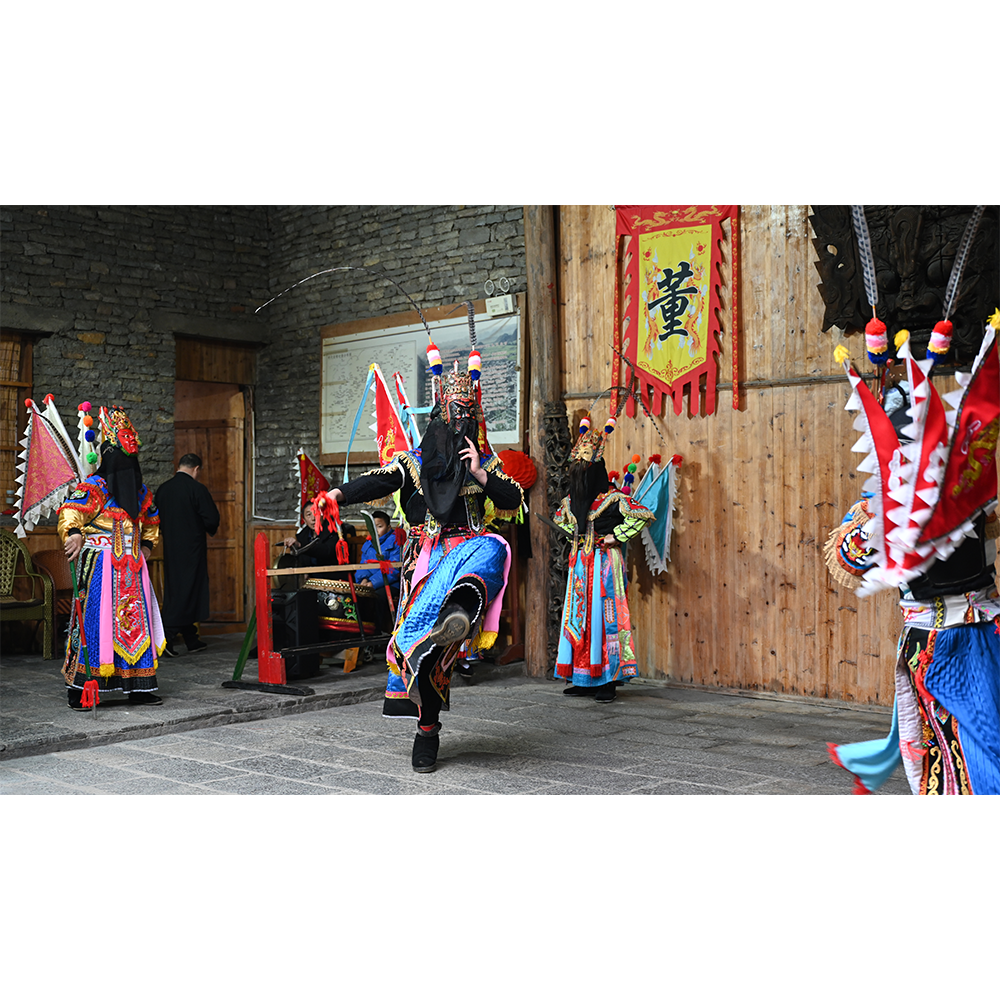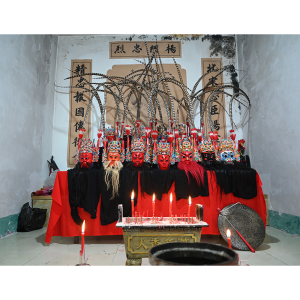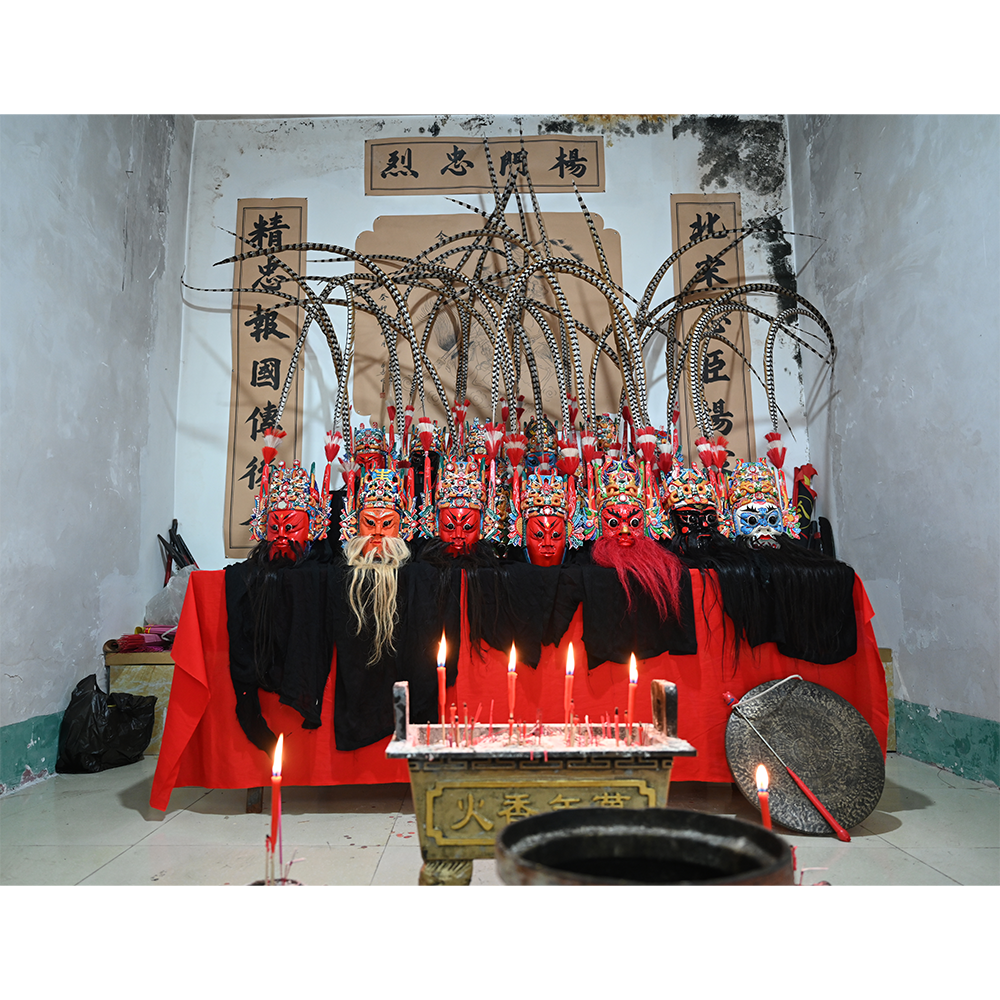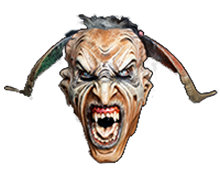TITLE: General Xinhuai Yu Nuo Mask
TYPE: face mask
GENERAL REGION: Asia
COUNTRY: China
SUBREGION: Guizhou
ETHNICITY: Hmong (Miao)
DESCRIPTION: Nuo mask of General Qinhuai Yu
CATALOG ID: ASCN017
MAKER: Zhou [first name unknown] (Cha Tou Pu Village, Pingba City, Anshun, 1934-2012)
CEREMONY: Nuoxi
FUNCTION: Celebration; Entertainment; Protection/Purification
AGE: 1984
MAIN MATERIAL: wood
OTHER MATERIALS: paint; string; mirror; human hair; adhesive; rubber bands; decorations of dyed cotton; bamboo; artificial pheasant feathers
The Nuoxi of China may be traced back to the Ming Dynasty (1368-1644 CE), possibly much earlier (some believe the Shang and Zhou Dynasties) and was popular in large parts of the empire, but especially along the southern borders, where it was a form of entertainment for the imperial troops. It evolved from a sacrificial rite performed by shamans into a more dramatic form, with both Buddhist and Taoist overtones. Nuo opera is based on historical stories and stories based on the Taoist religion and all roles (including female roles) are performed by men. It evolved into a popular form of entertainment and was eventually accompanied by an orchestra of Chinese instruments. The Nuo opera never quite lost its shamanic connection, however, and also was used to exorcise evil spirits at the home of sick persons. The sacred connection is evident from a religious ceremony that always precedes the opening of a Nuo opera. In addition, a wooden statue representing the originator of the opera is present at every performance, and nobody except the opera troupe may touch props used in the performance. Although the Chinese Communist Party attempted to suppress Nuo performances and eliminated it from most of the country, the opera continues to be performed in three southern provinces of China today (Guangxi, Guizhou, and Jiangxi).
The Miao people are part of the Hmong ethnic group living in southern China. The hair on Miao nuo masks must be cut from the corpse of a man who had several children and who lived an exemplary life, neither feuding with neighbors nor hoarding wealth. This character, General Qinhuai Yu, appears in a dance-drama recounting a story from the Tang Dynasty (618-907 CE). Qinhuai Yu is hte son of Qin Qiong (also known as Qin Shubao), a prominent door god who frequently appearas next to Yuchi Gong. The two door gods were originally generals of the Tang Dynasty responsible for protecting Emperor Tang Taizong from nightly hauntings by demons. In the drama, Qinhuai Yu is the second in command to the General Xue Dinghan in a campaign to subdue minority tribes to the west of the then-capital of China, Changan.
